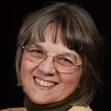F is for Figure It Out
I have a guest today: Camille Minichino, AKA Ada Madison! She's talking about puzzles and her latest mystery. Take it away, Camille!
"It's a Puzzlement," Yul Brynner, c. 1956
Lucky me, being hosted on a blog site with puzzle pieces as a banner!
I've been a puzzler (some say, I've been "puzzling," and that may also be true!) all my life. It started with math, where every day's homework was a puzzle. For algebra: If one train leaves a station in Chicago going 30 miles an hour . . . For geometry: Given two sides of a triangle . . .
I loved those problems, which to me were just games and puzzles. My newest protagonist, Professor Sophie Knowles, feels the same way. She teaches math at a small New England college, creates puzzles for magazines, and, by the way, solves one or two murders per book.
We often hear that mysteries are like jigsaw puzzles, that writers and readers enjoy putting the pieces together, ending up with a satisfying solution, much like turning 1500 jagged pieces into a reproduction of Monet's Water Lilies.
In a way. But mysteries have to be like challenging puzzles, not the easy kind where all the pieces are piled before us with one brisk dump from the box, and what's required is simply to sort them by color or shape and fit them together to match the picture on the cover of the box.
Are mysteries like crossword puzzles? Sort of. In a regular crossword, all the clues are there in a couple of columns. In most cases, there are black squares that are cues to word length. We fill in the blanks and enjoy a sense of accomplishment when every square is filled in.
Again, good mysteries are more challenging than that.
In a good "whodunit" mystery, there are many sets of clues that unfold: some are hidden in plain sight, some are subtly presented, some not; some are within the character profiles and arcs, the setting, or the plot. These mysteries are solved not by simply putting a given number of known pieces together, but by first sorting out the pieces that matter from the ones that don't. Maybe there are a couple of red herrings; maybe there are no herrings of any color.
I've seen jigsaw puzzles where the manufacturer has deliberately included extra pieces that don't belong in the scene. Similarly, there are the crossword puzzles that are diagramless. No black squares give us the word length; we have to figure that out ourselves.
Those puzzles are more like the great mysteries, where the clue is that the dog did not bark or the answer has been in the letter on the mantel all along.
Sometimes I worry that I'm wasting time with the morning acrostic, or the Sunday NY Times crossword, or the countless word games I find in print and online.
Is it enriching my life that today I located 40 Beatles songs in a word search grid?
I take my answer from no less a puzzle figure than Erno Rubik (b. 1944), sculptor, architect, and inventor of the Rubik's cube (patent, 1975). He has this to say: "The problems of puzzles are very near the problems of life, our whole life is solving puzzles."
Some of us get more practice than others.
Camille Minichino is a retired physicist turned writer.
As Camille Minichino, she's the author of the Periodic Table Mysteries. As Margaret Grace, she writes the Miniature Mysteries, based on her lifelong hobby. As Ada Madison, she writes the academic mysteries featuring Professor Sophie Knowles, college math teacher. "The Probability of Murder" was released March 6; "Mix-up in Miniature" was released April 2.
Soon, every aspect of her life will be a mystery series.
LOL! Thanks, Camille! Math was never my strong subject, but I think I would have done well, with a sleuth as a teacher. 
You can find out more about Camille and her works and her ways at her blog, Camille Minichino. There, you will also find links to the other stops on her blog book tour. You can find buy links and a discussion of THE PROBABILITY OF MURDER at Goodreads.
WRITING PROMPT: Make a list of all the occupations you've had and think of how those occupations involve knowledge and abilities of detection.
MA





